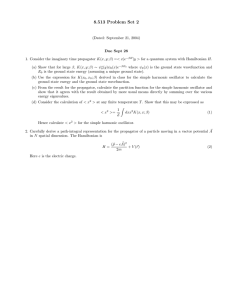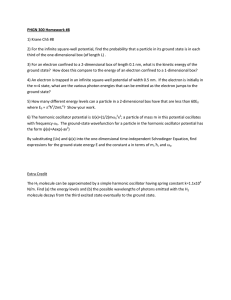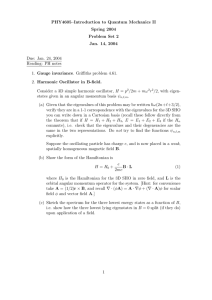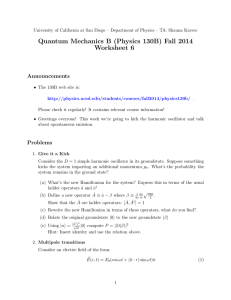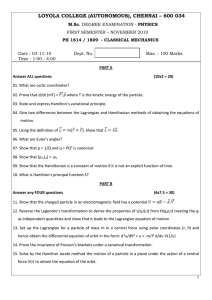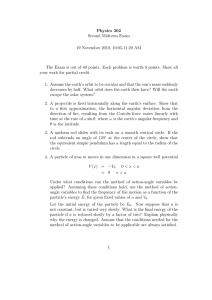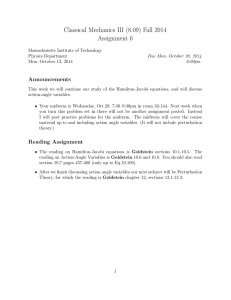Homework Assignment 5 Physics 302, Classical Mechanics Problems Fall, 2010
advertisement
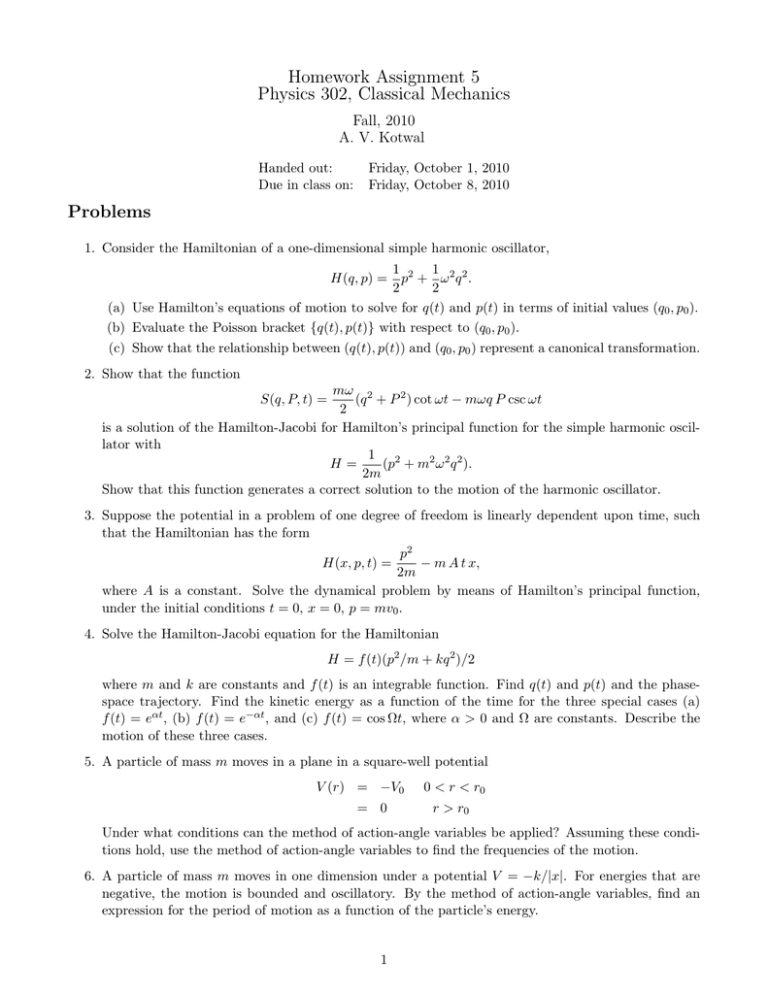
Homework Assignment 5
Physics 302, Classical Mechanics
Fall, 2010
A. V. Kotwal
Handed out:
Due in class on:
Friday, October 1, 2010
Friday, October 8, 2010
Problems
1. Consider the Hamiltonian of a one-dimensional simple harmonic oscillator,
1
1
H(q, p) = p2 + ω 2 q 2 .
2
2
(a) Use Hamilton’s equations of motion to solve for q(t) and p(t) in terms of initial values (q0 , p0 ).
(b) Evaluate the Poisson bracket {q(t), p(t)} with respect to (q0 , p0 ).
(c) Show that the relationship between (q(t), p(t)) and (q0 , p0 ) represent a canonical transformation.
2. Show that the function
mω 2
(q + P 2 ) cot ωt − mωq P csc ωt
2
is a solution of the Hamilton-Jacobi for Hamilton’s principal function for the simple harmonic oscillator with
1 2
H=
(p + m2 ω 2 q 2 ).
2m
Show that this function generates a correct solution to the motion of the harmonic oscillator.
S(q, P, t) =
3. Suppose the potential in a problem of one degree of freedom is linearly dependent upon time, such
that the Hamiltonian has the form
p2
− m A t x,
2m
where A is a constant. Solve the dynamical problem by means of Hamilton’s principal function,
under the initial conditions t = 0, x = 0, p = mv0 .
H(x, p, t) =
4. Solve the Hamilton-Jacobi equation for the Hamiltonian
H = f (t)(p2 /m + kq 2 )/2
where m and k are constants and f (t) is an integrable function. Find q(t) and p(t) and the phasespace trajectory. Find the kinetic energy as a function of the time for the three special cases (a)
f (t) = eαt , (b) f (t) = e−αt , and (c) f (t) = cos Ωt, where α > 0 and Ω are constants. Describe the
motion of these three cases.
5. A particle of mass m moves in a plane in a square-well potential
V (r) = −V0
= 0
0 < r < r0
r > r0
Under what conditions can the method of action-angle variables be applied? Assuming these conditions hold, use the method of action-angle variables to find the frequencies of the motion.
6. A particle of mass m moves in one dimension under a potential V = −k/|x|. For energies that are
negative, the motion is bounded and oscillatory. By the method of action-angle variables, find an
expression for the period of motion as a function of the particle’s energy.
1

